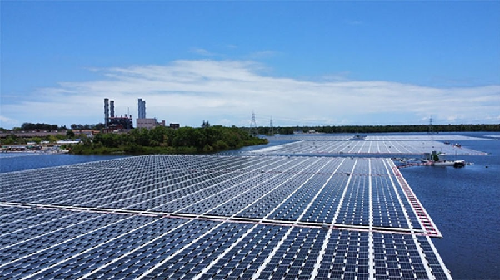In a landmark achievement for its clean energy transition, India has ascended to the third spot globally in total installed solar power capacity, surpassing established renewable energy leaders Japan and Germany. The rapid surge underscores India’s ambitious commitment to solar energy as a cornerstone of its strategy to meet soaring electricity demand and combat climate change.
Data from the Energy Institute’s Statistical Review of World Energy 2025 and other global energy reports confirms that India’s installed solar capacity crossed the 97-gigawatt (GW) mark, catapulting the country onto the podium of global solar power. This monumental growth is fueled by a mix of massive, utility-scale solar parks and widespread adoption of decentralized, rooftop solar systems, driving an impressive annual growth rate.
India’s solar journey has been nothing short of transformative. From a relatively minor player just a decade ago, the nation has rapidly scaled its capacity, driven by supportive government policies like the National Solar Mission, open access schemes, and production-linked incentives (PLI).
“This milestone is a testament to India’s vision for a ‘green’ future and its dedication to achieving its non-fossil fuel capacity targets well ahead of schedule,” commented a senior analyst at a prominent energy think tank.
India’s solar expansion is a key component of its commitment under the Paris Agreement, where it aims to achieve 500 GW of non-fossil fuel electricity capacity by 2030 and reach Net-Zero emissions by 2070.
The country’s success highlights the massive potential of its sun-drenched regions. States like Rajasthan and Gujarat are leading the charge, hosting some of the world’s largest solar installations, including the colossal Bhadla Solar Park.
The shift in global rankings reflects the diverging paces of energy transition worldwide, with Asian and American markets dominating capacity additions.
| Rank | Country | Installed Solar Capacity (MW, 2024)* | Annual Growth Rate (2023-24)* |
| 1 | China | 887,930 | 45.6% |
| 2 | United States | 177,470 | 27.5% |
| 3 | India | 97,384 | 33.7% |
| 4 | Japan | 91,610 | 2.8% |
| 5 | Germany | 89,943 | 20.1% |
| 6 | Brazil | 53,113 | 40.0% |
| 7 | Spain | 38,587 | 20.9% |
| 8 | Australia | 38,472 | 15.6% |
| 9 | Italy | 36,013 | 22.7% |
| 10 | South Korea | 26,645 | 13.4% |
*Source: Energy Institute’s Statistical Review of World Energy 2025 (Data for 2024)
While celebrating the milestone, officials acknowledge the substantial task ahead. To meet the country’s 2030 targets, annual capacity additions must continue at an aggressive pace. The focus is now shifting toward integrating utility-scale solar with advanced energy storage solutions and promoting greater residential and commercial rooftop solar adoption to ensure grid stability and all-day clean power.
India’s ascent solidifies its role as a “solar superpower,” setting a powerful example for other developing nations seeking to couple robust economic growth with an effective, large-scale clean energy transition.







